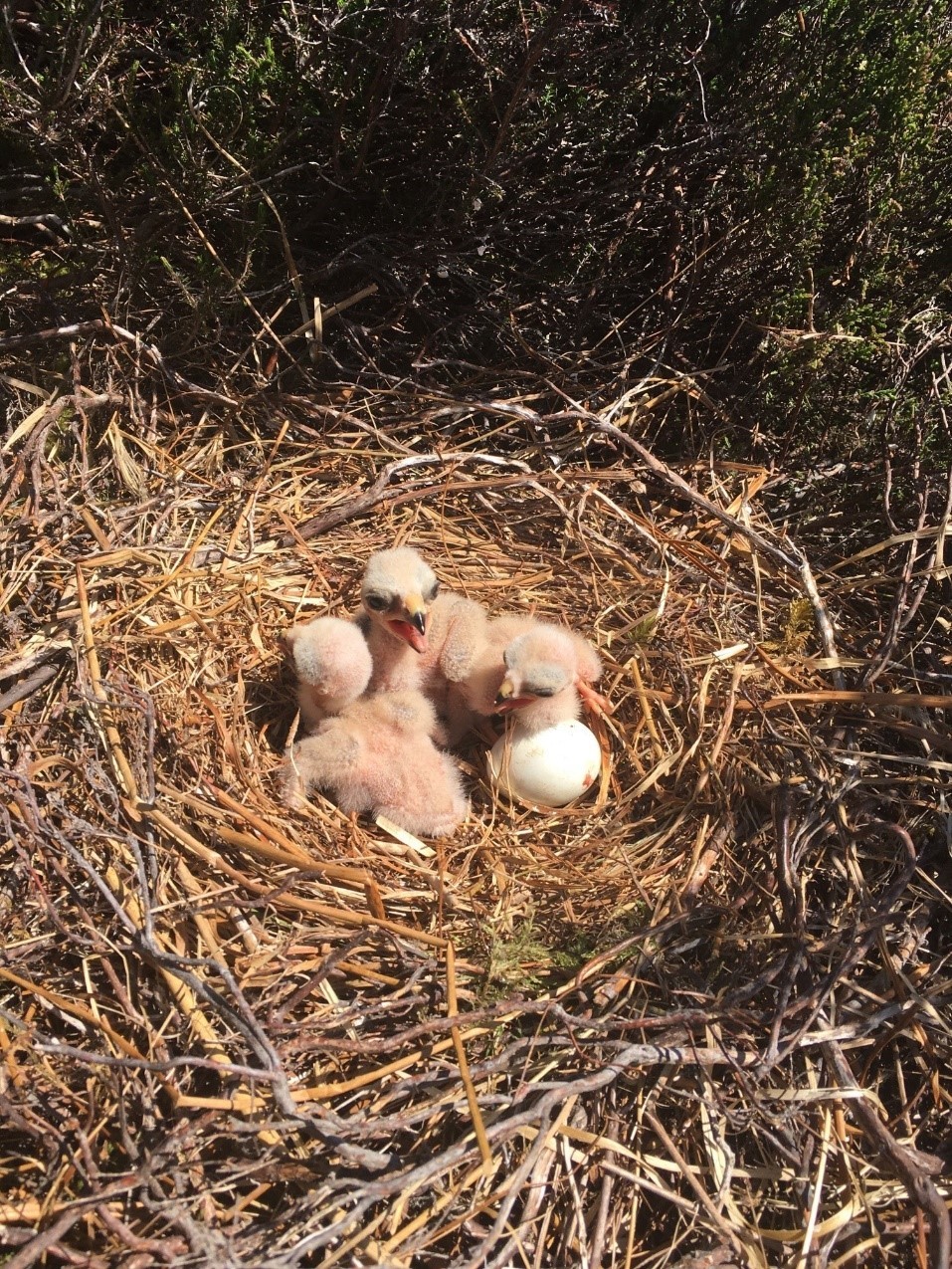Urgent works needed for the safe operation of the railway coincided with breeding season and were in a location that was both a Site of Special Scientific Interest (SSSI) and Special Protection Area (SPA).
This had the potential to disturb breeding harriers and Network Rail’s ecology team worked with the Highland Raptor Study Group to conduct surveys for hen harrier within the vicinity of the line.
Once breeding harriers had been identified, Network Rail put in place special working practices to minimise disruption for the birds.
Happily, three hen harrier chicks successfully fledged from nests adjacent to the work site which is a real success story for these protected birds.
Jonathan Callis, senior asset engineer for Network Rail, said: “We take our responsibility to the lineside environment and Scotland’s wildlife extremely seriously.
“However, to protect the safety of the railway and those who travel on it, we sometimes need to carry out work during bird nesting season, in protected areas or in this case, both. It is then we seek the help of our ecologists and specialists to develop safe ways of working and best practice to minimise disruption and protect any species or habitats adjacent to the line.
“We are delighted the care, professionalism and collaboration demonstrated by everyone who contributed to this project has resulted in such a successful outcome for the birds.”

Brian Etheridge, from the Highland Raptor Study Group, said: "It was a pleasure to work with Network Rail this spring and summer carrying out ornithological surveys in the vicinity of the track between Rogart and Lairg.
“The priority was to look for breeding hen harriers, a scarce and threatened bird of prey for which this area has been designated as a Special Protection Area (SPA).
“Two nesting pairs were found, with one nest in close proximity of the track. Network Rail were quick to suspend all track-side scrub clearance in a bid to prevent any disturbance to the nesting pair.
“This resulted in three young harriers fledging successfully and is much to the credit of Network Rail and the company and staff should be proud of their contribution to safe-guarding this iconic species."
As part of the mitigation measures put in place for the hen harriers, a ‘high-risk works area’ was established, which incorporated areas adjacent to the railway line that offered suitable nesting and foraging habitat as well as areas where hen harrier activity was noted.
Strict guidelines meant that no work was allowed in the area around the nests until all breeding attempts were concluded.
Measures were also put in place to reduce noise disturbance including the use of battery-operated chainsaws and time limited working in any single area to keep noise to a minimum.
Immediately before works commenced on site, a further survey was undertaken to check any nesting hen harriers and confirm that the works were safe to proceed.
A camera was also installed to monitor the nesting locations throughout the work and to check that there were no signs of disturbance.
The location of the work, between Rogart and Lairg, runs through the Strath Carnaig and Strath Fleet SSSI and SPA. Both are designated areas for supporting a population of breeding hen harrier which is of European importance.
